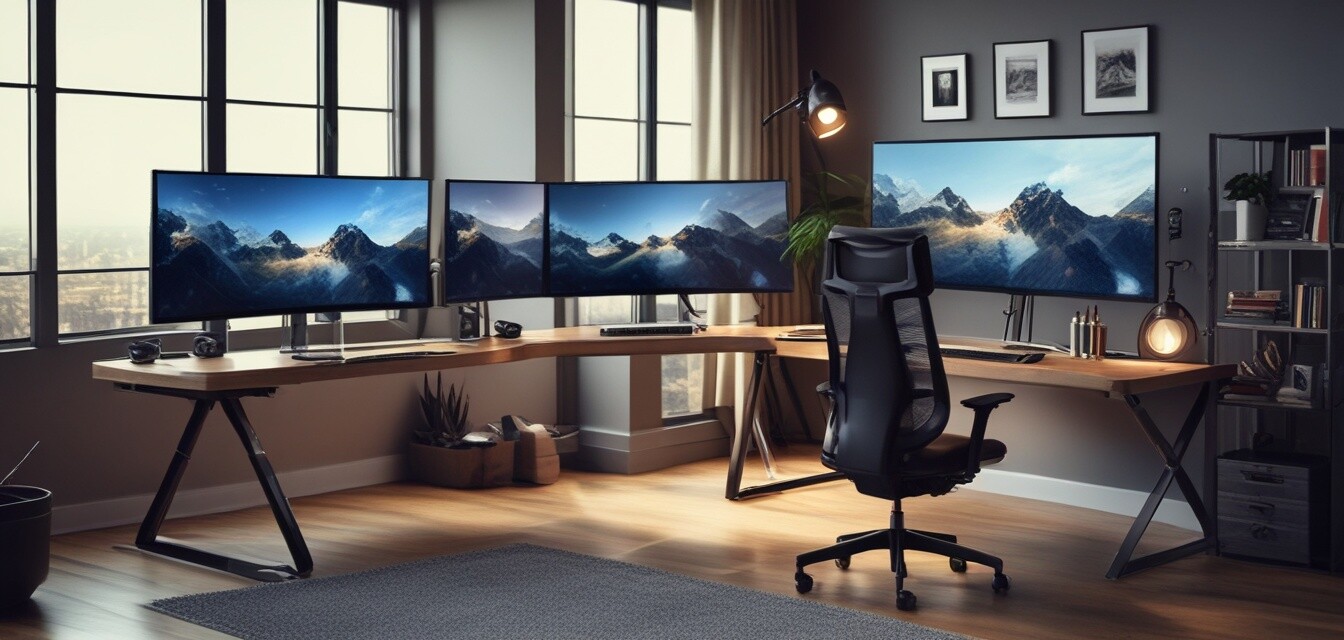
Setting Up a Home Office for Freelancers
Creating an efficient and tailored workspace is crucial for freelancers. A well-organized home office helps boost productivity, comfort, and overall job satisfaction. This guide provides practical tips for setting up your home office to cater to your unique needs as a freelancer.
Key Takeaways
- Choose ergonomic furniture to enhance comfort
- Implement a multi-monitor setup for better efficiency
- Ensure proper lighting and minimal distractions
- Stay organized with cable management and storage solutions
- Optimize your office with DIY tips and tricks
1. Ergonomic furniture for comfort
Investing in ergonomic furniture is fundamental for freelancers. Long hours spent in front of a computer require comfortable seating and desks that promote good posture. Here's a quick comparison of essential ergonomic items:
| Item | Purpose | Considerations |
|---|---|---|
| Ergonomic chair | Supports back and lumbar | Adjustable height and lumbar support |
| Height-adjustable desk | Encourages movement and good posture | Electric or manual adjustments |
| Monitor stand | Improves screen height | Fixed height or adjustable options |
2. Creating a multi-monitor setup
Having multiple monitors can significantly boost your productivity. Here’s a simple guide on how to set up a multi-monitor configuration:
- Assess your desk space: Ensure enough room for multiple monitors.
- Choose compatible monitors: Match resolution and size for a seamless experience.
- Use a docking station: Manage connections with ease.
- Set display configurations: Arrange monitors in your operating system settings.
For detailed guidance, check our multi-monitor setup solutions.
3. Proper lighting and ambiance
A well-lit area can enhance focus and reduce eye strain. Consider the following lighting tips:
- Use a combination of natural and artificial light.
- Position your desk near windows, if possible.
- Incorporate task lighting for specific work areas.
4. Minimizing distractions
Maintaining focus in a home environment can be challenging. Implement the following strategies:
- Designate specific work hours.
- Create a dedicated workspace, isolating it from leisure areas.
- Use tools or apps that block distracting websites.
5. Cable management and organization
Cable clutter can lead to distractions and unsafe working conditions. Here are essential cable management tips:
- Use cable ties to group similar cables.
- Invest in a cable management box to hide excess wires.
- Label cables for easy identification.
6. Creative DIY tips and tricks
Enhancing your workspace doesn’t have to be expensive. Here are some DIY ideas to inspire you:
- Create a bulletin board with fabric and corkboard.
- Build a simple desk organizer using repurposed materials.
- Use wall-mounted shelves for additional storage without taking up floor space.
Beginners Section: Starting Your Home Office Journey
Setting up a home office can feel overwhelming for beginners. Follow these essential steps:
- Define the purpose of your workspace.
- Establish a budget for your setup.
- Research ergonomic furniture that fits both style and function.
- Plan the layout to optimize space and workflow.
Conclusion
Creating a functional home office tailored for freelancers involves thoughtful planning and investment in the right equipment. By focusing on ergonomics, organization, and minimizing distractions, you can enhance your workspace, elevate productivity, and enjoy your freelance career to the fullest.
Pros
- Customizable environment tailored to personal needs
- Potential for increased productivity and focus
- Cost-saving compared to renting office space
Cons
- Potential for distractions at home
- Initial setup costs can add up
- May require discipline to maintain work-life balance
For more DIY tips, explore our DIY Tips and Tricks section.